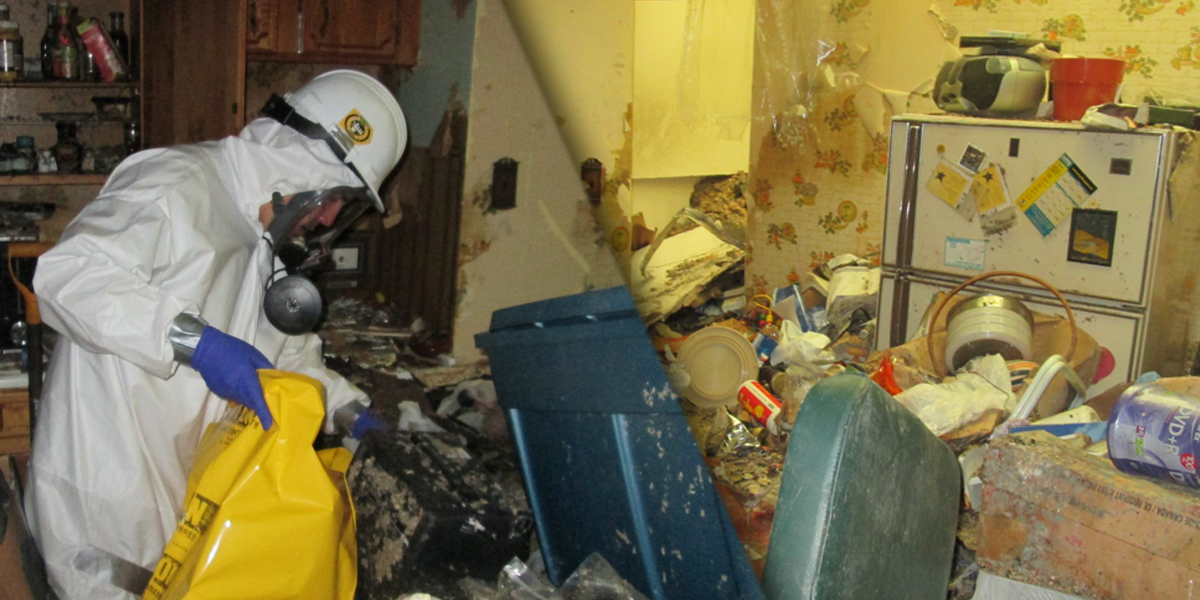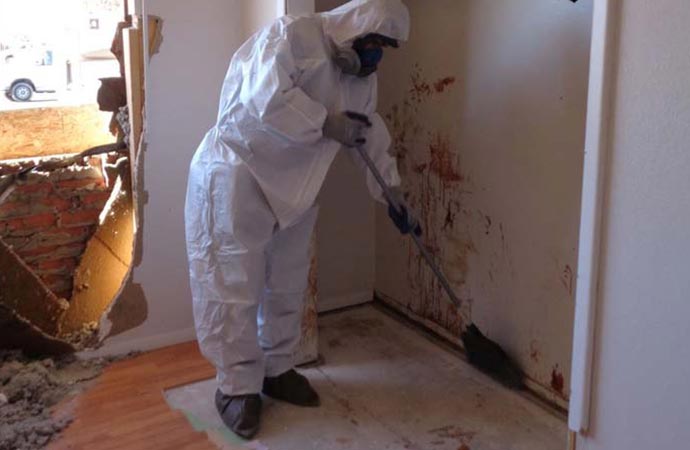Expert Biohazard Cleanup for Crime Scenes, Injury Incidents, and Polluted Rooms
In the realm of professional biohazard cleanup, careful attention to information and adherence to safety methods are vital. As we dig into the details of biohazard clean-up for these sensitive environments, a much deeper understanding of the difficulties and vital procedures entailed will arise, shedding light on the vital function of specialist clean-up solutions in recovering security and tranquility of mind.

Importance of Biohazard Clean-up
Biohazard cleaning following criminal offense scenes and injury incidents is essential for making certain the safety and security of people and the atmosphere. When these cases happen, they typically leave a range of biohazards such as blood, bodily fluids, and other potentially transmittable materials. These materials can nurture unsafe virus like bacteria and viruses, presenting significant wellness dangers otherwise effectively cleaned and disinfected.
Specialist biohazard clean-up services are educated to take care of these unsafe products safely and effectively. They have the necessary equipment, such as personal safety equipment and specialized cleaning up representatives, to extensively sanitize the affected areas. By turning over the cleaning to skilled experts, individuals can prevent exposure to dangerous virus and avoid the spread of contagious illness.
Furthermore, appropriate biohazard cleaning is crucial for protecting the environment. Improper disposal of biohazardous products can pollute soil, water sources, and air, posturing a threat to wild animals and the environment. By adhering to rigorous cleaning protocols, experts can guarantee that biohazards are safely eliminated and taken care of in conformity with laws, reducing the threat of environmental contamination.
Types of Biohazards Encountered
Numerous dangerous products typically run into in crime scenes and trauma occurrences existing significant health and wellness risks if not dealt with correctly. Blood and bodily liquids are among one of the most usual biohazards discovered in these scenarios. These fluids can carry microorganisms such as HIV, hepatitis B and C, and various other hazardous microorganisms. In addition, tissues, organs, and body components can also posture severe health dangers because of prospective contamination.
An additional type of biohazard commonly experienced is sharp items like needles, broken glass, and other items that can cause injuries and transfer infections. Chemical dangers are likewise a worry, as crime scenes might consist of compounds like tear gas, pepper spray, or medication production materials that require specific handling and disposal treatments to stop further injury.
Furthermore, mold and germs development can occur in areas where disintegration or prolonged exposure to wetness has actually occurred. These microbes can launch toxins and allergens right into the air, presenting respiratory system risks to those revealed. On the whole, biohazard cleanup professionals should be experienced and well-equipped to effectively handle these various kinds of harmful products to make certain the safety of themselves and others.
Equipment and Protective Gear
When resolving the important task of taking care of biohazards experienced in criminal offense scenes and trauma occurrences, the usage of proper equipment and safety equipment is vital to guaranteeing the safety of individuals included in the cleaning process. Specialized cleaning tools like biohazard bags, sharps, and disinfectants containers are required for the secure collection and disposal of contaminated materials. Making certain that all equipment is effectively maintained, routinely evaluated, and utilized according to security guidelines is vital in lessening the risk of direct exposure to biohazards during cleaning operations.
Cleaning Refine and Techniques
Reliable and comprehensive cleaning of biohazardous materials from crime scenes and injury incidents calls for thorough focus Recommended Site to information and adherence to rigorous security procedures. The clean-up process usually includes a number of vital actions. Originally, the location must be evaluated to figure out the level of contamination and the appropriate cleaning methods required. Next, all biohazardous materials, including blood, bodily liquids, and tissue residues, must be thoroughly removed and dealt with according to neighborhood guidelines.
Adhering to the elimination of biohazardous materials, the damaged area undertakes a comprehensive cleansing and sanitation procedure. This action entails using specialized cleaning agents and tools to ensure that all traces of contamination are eradicated. After cleaning, the anchor area is subjected to strenuous screening to validate that it is safe and complimentary of any kind of staying biohazards.

Decontamination and Disposal Procedures
To ensure complete decontamination and correct disposal of biohazardous materials, complying with the careful clean-up procedure, details procedures have to be meticulously followed with strict adherence to safety and security procedures. Purification includes the removal or neutralization of pollutants to reduce the risk of exposure and spread of unsafe materials. This process generally includes cleaning, disinfecting, and disinfecting the damaged area using specialized tools and EPA-approved chemicals.
When decontamination is finished, proper disposal of biohazardous products is crucial to stop additional contamination or harm. Biohazardous waste, such as blood-soaked products or bodily liquids, must be meticulously gathered, packaged, and classified according to regulatory standards. ATP testing. These products are then moved to accredited centers for disposal through proper networks, guaranteeing conformity with local, state, and federal guidelines

Final Thought
Finally, specialist biohazard cleaning is essential for making sure the effective and safe removal of harmful products from criminal activity scenes, injury incidents, and infected spaces. By using customized devices, safety their explanation equipment, and following appropriate cleanup procedures and techniques, biohazard clean-up groups can successfully get rid of and sanitize of biohazards, lessening the risk of direct exposure and injury to individuals and the setting.
As we dig right into the complexities of biohazard cleaning for these delicate environments, a much deeper understanding of the obstacles and critical procedures involved will certainly arise, shedding light on the important function of expert clean-up services in recovering security and tranquility of mind.
Specialist biohazard clean-up services are educated to take care of these harmful materials securely and successfully. By complying with strict cleanup methods, experts can guarantee that biohazards are safely removed and disposed of in conformity with policies, reducing the risk of ecological contamination.
In general, biohazard clean-up specialists need to be fully equipped and skilled to successfully take care of these different kinds of unsafe materials to make certain the safety of themselves and others.
When resolving the crucial job of handling biohazards experienced in criminal activity scenes and injury events, the use of correct equipment and safety equipment is paramount to ensuring the safety of individuals involved in the cleanup process.